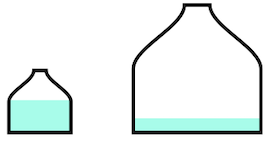What is a Fluid?

In a solid, the molecules are locked into specific places and cannot move relative to each other. The most they can do is to vibrate back and forth, which is where they store their thermal energy. Solids typically maintain the same volume and shape: a wood cube remains a cube unless you break it or carve it up or something.

In a gas, the molecules are typically spaced very far apart and do not interact with each other very much. They are allowed to wander, to rotate, and to vibrate as well, and they store their thermal energy in all those different types of motion. Gases will expand to take on the shape and size of their container.

Liquids lie somewhere in between. The molecules in a liquid are able to wander about as in a gas, but they do exert a force on one another that causes them to stick together. Thus while liquids can take on the shape of their container, they have a constant volume.
A fluid is a substance that can flow: i.e. a liquid or a gas.